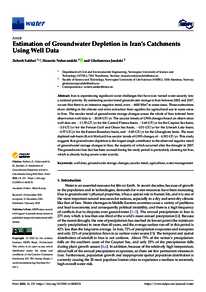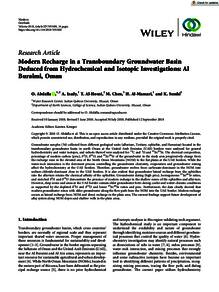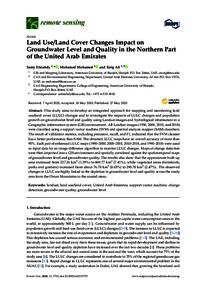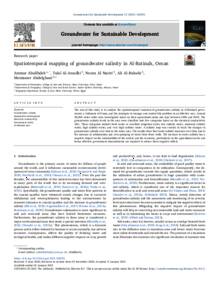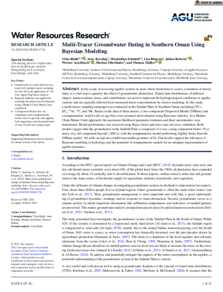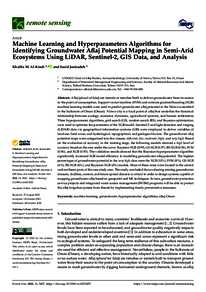وثيقة
Estimation of groundwater depletion in Iran’s catchments using well data.
المعرف
DOI: 10.3390/w14010131
المصدر
Water (Switzerland). v. 14, 1, 131
المساهمون
Nahavandchi, Hossein., مؤلف
Joodaki, Gholamreza., مؤلف
الدولة
Switzerland
الناشر
MDPI.
ميلادي
2022-01-01
اللغة
الأنجليزية
الموضوع
الملخص الإنجليزي
Iran is experiencing significant water challenges that have now turned water security into a national priority. By estimating secular trend groundwater storage in Iran between 2002 and 2017, we see that there is an intensive negative trend, even −4400 Mm3 in some areas. These estimations show shifting in the climate and extra extraction from aquifers for agricultural use in some areas in Iran. The secular trend of groundwater storage changes across the whole of Iran inferred from observation well data is −20.08 GT/yr. The secular trends of GWS changes based on observation well data are: −11.55 GT/yr for the Central Plateau basin, −3.60 GT/yr for the Caspian Sea basin, −3.0 GT/yr for the Persian Gulf and Oman Sea basin, −0.53 GT/yr for the Urmieh Lake basin, −0.57 GT/yr for the Eastern Boundary basin, and −0.83 GT/yr for the Gharaghom basin. The most depleted sub-basin (Kavir Markazi) has secular trends of GWS changes of −4.503 GT/yr. This study suggests that groundwater depletion is the largest single contributor to the observed negative trend of groundwater storage changes in Iran, the majority of which occurred after the drought in 2007. The groundwater loss that has been accrued during the study period is particularly alarming for Iran, which is already facing severe water scarcity.
ISSN
2073-4441
URL المصدر
قالب العنصر
مقالات الدوريات

